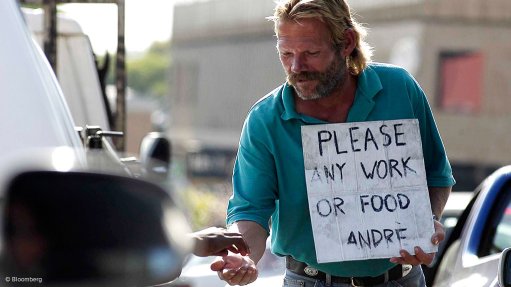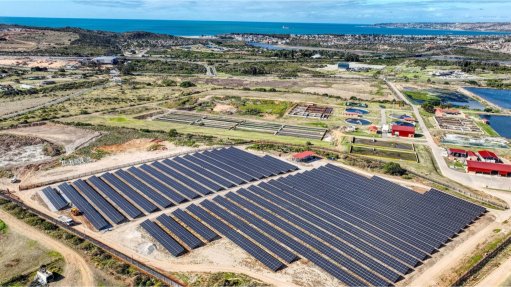Secunda refinery’s post-2030 output cut as Sasol struggles to pin down gas supply
Energy and chemicals group Sasol says it is continuing to assess several technology and feedstock solutions to bolster post-2030 liquid fuels and chemicals volumes at its Secunda refinery, in Mpumalanga, while still meeting its commitment to reduce greenhouse-gas emissions by 30% by the end of the decade.
None of these alternatives have advanced to maturity, however, and the JSE group has, therefore, revised the refinery’s post-2030 yearly production guidance to only 6.7-million tons from the 7.5-million-ton-plus output achieved previously.
As a consequence, it has also impaired the liquid-fuels-linked assets at the integrated complex by a whopping R36-billion. Sasol’s earnings before interest and tax fell by 65% to R21.5-billion year-on-year in 2023, partly because of the impairment of assets.
It has, however, restated 2050 as being the useful life of the refinery, albeit with the prospect of negative cashflows arising from the fuel business after 2030, partially offset by the value that will continue to arise from the chemicals business.
The group was initially aiming to sustain volumes by progressively switching from coal to gas as a transition feedstock, but it has to date failed to secure significant additional gas and has also shelved an idea for using imported liquefied natural gas on the basis that such a solution was uneconomic.
Sasol reported progress on its $530-million gas drilling campaign in southern Mozambique, where five additional wells have been brought online to help extend a supply plateau to 2028 and ongoing exploration to extend production beyond 2030 yielded some positive results. However, these are regarded as contingent resources that could not yet be included in its business assumptions.
Likewise, Sasol was keeping close tabs on Kinetiko Energy’s exploration activities in Mpumalanga and was engaging with the company on its discoveries to understand the technical aspects of the resource, as well as to assess the economics.
WORST-CASE VS DIRE SCENARIOS
In an interview with Engineering News, president and CEO Fleetwood Grobler described both the impairment and the revised volume guidance as a “worst-case scenario”, reporting that Sasol was making steady progress on gas, biomass, carbon capture and utilisation and energy efficiency options that could limit the falloff in volumes.
These solutions would be required in addition to projects that were already under way targeting energy efficiency, reducing yearly coal usage from 40-million tons to 30-million tons, the turning down of boilers and integrating 1 200 MW of renewable energy.
Grobler acknowledged, however, that the impairment and volume revisions assumed that the JSE group would prevail in its appeal of the National Air Quality Officer’s decision to decline its application to have its Secunda boilers regulated using a load-based emission limit for sulphur dioxide (SO2).
The appeal was lodged with Forestry, Fisheries and the Environment Minister Barbara Creecy on July 31, after Sasol’s proposed alternative to the concentration-based emissions limit prescribed by the South African authorities was rejected on July 11.
Should the appeal fail, Grobler said the consequences would be “dire”, as it would result in the “phased shutdown” of Secunda.
He expressed confidence that Sasol’s load-based solution would prevail, arguing that it not only lowered SO2 emissions, but also particulate matter and nitrogen oxide emissions, while sustaining economic activity at the complex.
“We are very clear of the stakes. If we cannot get the appeal and the remedies thereafter, then the impact is dire.”
Article Enquiry
Email Article
Save Article
Feedback
To advertise email advertising@creamermedia.co.za or click here
Comments
Press Office
Announcements
What's On
Subscribe to improve your user experience...
Option 1 (equivalent of R125 a month):
Receive a weekly copy of Creamer Media's Engineering News & Mining Weekly magazine
(print copy for those in South Africa and e-magazine for those outside of South Africa)
Receive daily email newsletters
Access to full search results
Access archive of magazine back copies
Access to Projects in Progress
Access to ONE Research Report of your choice in PDF format
Option 2 (equivalent of R375 a month):
All benefits from Option 1
PLUS
Access to Creamer Media's Research Channel Africa for ALL Research Reports, in PDF format, on various industrial and mining sectors
including Electricity; Water; Energy Transition; Hydrogen; Roads, Rail and Ports; Coal; Gold; Platinum; Battery Metals; etc.
Already a subscriber?
Forgotten your password?
Receive weekly copy of Creamer Media's Engineering News & Mining Weekly magazine (print copy for those in South Africa and e-magazine for those outside of South Africa)
➕
Recieve daily email newsletters
➕
Access to full search results
➕
Access archive of magazine back copies
➕
Access to Projects in Progress
➕
Access to ONE Research Report of your choice in PDF format
RESEARCH CHANNEL AFRICA
R4500 (equivalent of R375 a month)
SUBSCRIBEAll benefits from Option 1
➕
Access to Creamer Media's Research Channel Africa for ALL Research Reports on various industrial and mining sectors, in PDF format, including on:
Electricity
➕
Water
➕
Energy Transition
➕
Hydrogen
➕
Roads, Rail and Ports
➕
Coal
➕
Gold
➕
Platinum
➕
Battery Metals
➕
etc.
Receive all benefits from Option 1 or Option 2 delivered to numerous people at your company
➕
Multiple User names and Passwords for simultaneous log-ins
➕
Intranet integration access to all in your organisation





















